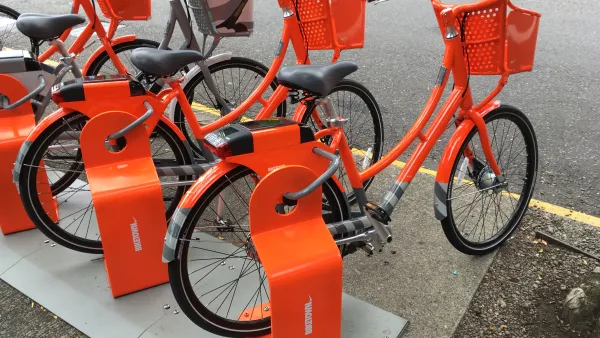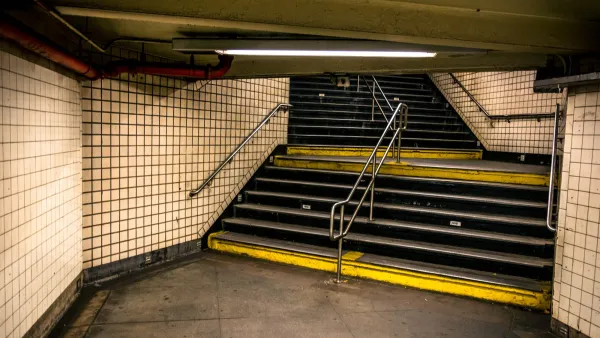Scott Schafer pens a column inspired by watching a visually impaired woman navigate a busy corner of Minneapolis. The question raised by the column: How can we improve level of service for the blind?
Scott Schafer's recent column for Streets.mn is thoughtful reminder of the many people neglected by engineering to auto-centric level of service standards. After watching a visually impaired women navigate a busy intersection to get to the Vision Loss Resources center, obviously an essential facility for the women's quality of life, once she actually gets inside the door.
Schafer takes a moment to imagine how scared he would be to navigate the street without the benefit of site. Then he starts to imagine solutions:
"What can we do to make it better? The Model Design Manual for Living Streets has at least two suggestions to make sidewalks safe. First, make sidewalks level. By making the ramp steeper and routing the sidewalk slightly away from the street, we can keep the sidewalk from sloping."
Schafer's column ends with a call to shift the myopic considerations of the planners, engineers, and designers shaping the world: "What's Lyndale's level of service for the sight-impaired woman I saw last week?"
FULL STORY: Improving Level of Service for Blind People

National Parks Layoffs Will Cause Communities to Lose Billions
Thousands of essential park workers were laid off this week, just before the busy spring break season.

Retro-silient?: America’s First “Eco-burb,” The Woodlands Turns 50
A master-planned community north of Houston offers lessons on green infrastructure and resilient design, but falls short of its founder’s lofty affordability and walkability goals.

Delivering for America Plan Will Downgrade Mail Service in at Least 49.5 Percent of Zip Codes
Republican and Democrat lawmakers criticize the plan for its disproportionate negative impact on rural communities.

Test News Post 1
This is a summary

Test News Headline 46
Test for the image on the front page.

Balancing Bombs and Butterflies: How the National Guard Protects a Rare Species
The National Guard at Fort Indiantown Gap uses GIS technology and land management strategies to balance military training with conservation efforts, ensuring the survival of the rare eastern regal fritillary butterfly.
Urban Design for Planners 1: Software Tools
This six-course series explores essential urban design concepts using open source software and equips planners with the tools they need to participate fully in the urban design process.
Planning for Universal Design
Learn the tools for implementing Universal Design in planning regulations.
EMC Planning Group, Inc.
Planetizen
Planetizen
Mpact (formerly Rail~Volution)
Great Falls Development Authority, Inc.
HUDs Office of Policy Development and Research
NYU Wagner Graduate School of Public Service




























